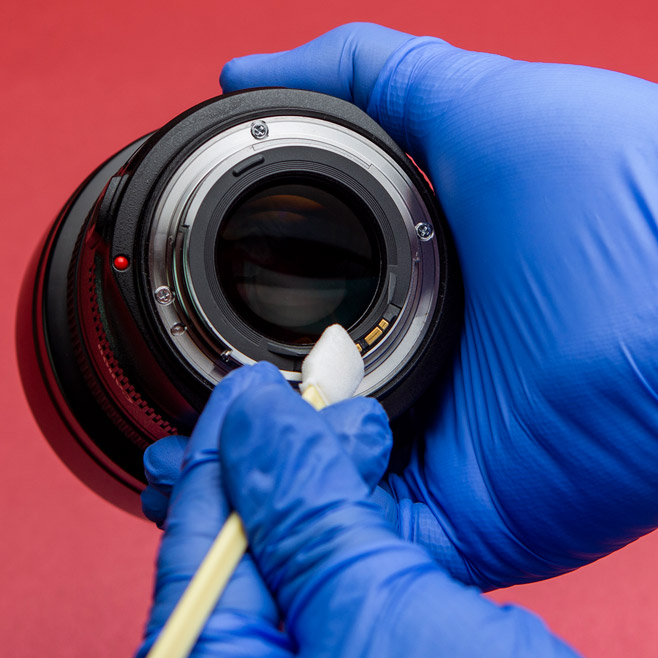Aerospace, Cleanroom News
CubeSats? – In Space Exploration, Less Just May Be More.
Throughout the history of US space travel exploration, big concepts have dominated. Big budgets, big ideas, big dreams, and big names. Founded in 1958 under the Eisenhower administration, one such name – the North American Space Agency (NASA) – was to become the center point of aerospace development and research. Initially founded as a response to the then Soviet Union’s achievements in the ‘Space Race’, NASA’s first high profile mission – Project Mercury – sought to understand whether we, as humans, might one day be able to survive in an extraterrestrial environment. And, for space-related technology and innovation, NASA became the monolith, the American standard by which all other agencies would be judged, propelling incredible leaps forward in space travel and exploration with projects that not only took humans off of our planet but also placed us on the moon and into the long-term habitat of the International Space Station. For more than sixty years, the agency has been a giant in its field and, at least in terms of American aeronautics, the only player in the game.
Then, in 2002, came a new contender to the throne: SpaceX. Founded by innovation visionary Elon Musk, SpaceX now has launch facilities in Florida and California, a rocket development plant in Texas, and more than 4000 employees at its Hawthorne, California Headquarters.(1) Founded on big ideas and blue-sky thinking, SpaceX has a mandate to design, manufacture and launch rockets and spacecraft, and seeks to ‘revolutionize space technology, with the ultimate goal of enabling people to live on other planets.’(2) In the spirit of shared interests, SpaceX now has contracts with NASA to fly supply missions to the International Space Station and plans are underway to upgrade its Dragon craft to carry a human payload – passengers – to the ISS.*
And now there’s another new big player in town.
Blue Origin, founded by Amazon CEO Jeff Bezos, has its sights set on grabbing a slice of the extraterrestrial pie too. According to Spaceflight Insider, an online portal for the aerospace industry, Bezos is spearheading the construction of a facility that will build reusable orbital vehicles. Measuring in at 740,000 square feet, the facility is ‘custom-built from the ground up to accommodate manufacturing, processing, integration, and testing. Among other things, the facility [will host] large scale friction stir welding and automated composite processing equipment.’(3) Since it is anticipated that all of Blue Origin’s vehicles – from the orbital launchers to its Vulcan rocket – will be manufactured there, the facility looks set to rival SpaceX’s California facility.
Between SpaceX, Blue Origin, and other private ventures such as Mars One (see our article ‘What Do Cleanrooms, Mars, and Cooking Have in Common?’), a casual observer may be forgiven for thinking that the future of space exploration – and indeed colonization – looks overwhelmingly large. Large rockets, large dreams, large budgets. But if you know where to look, a peek behind the curtain might reveal an interesting trend – one that is decidedly more modest – happening in parallel with the huge dreams of Musk and Bezos. Welcome to the wonderful world of the CubeSat.
In terms of their diminutive size, a CubeSat is to a spacecraft what a Lego brick is to the Empire State Building. Composed of multiples of units just 10cm3, CubeSats resemble oversized Rubik’s Cubes and use nothing more computationally advanced than commercial, ‘off the shelf’ components. But what their appearance lacks in romance and pizzazz of 21st century rocketry, they more than make up for in potential. First developed in 1999 by Stanford University and California Polytechnic State University, the CubeSat was initially intended as a low-earth orbit satellite that would perform specific research tasks for both the commercial and academic sectors. Where the costs associated with deploying a full-sized satellite represented an insurmountable financial obstacle, the launch of a CubeSat as secondary payload offered a lower-budget alternative. To date, almost 500 CubeSats have been launched, conducting experiments on everything from zero-gravity weather research to testing developmental spaceflight systems to the detection and recording of extremely low frequency (ELF) earthquake emission data.(4)

And with the drive toward miniaturization, these intriguing little devices – often weighing little more than 3lbs per unit – are now starting to gain the respect they deserve. With a deliberately-limited scope, CubeSats deliver highly-focused results individually in addition to working together as separate components of a bigger project. Their rapid development for smaller missions – often leveraging the power of additive manufacturing (aka 3-D printing) – enables the acquisition of faster results with a quicker turn-around. And seeing the massive new potential of small devices, NASA recognized the need to pivot. In Pasadena, CA, just down the hall from where such iconic – and gigantic – spacecraft as Voyager, Cassini, and Galileo began their missions, the agency’s Jet Propulsion Laboratory (JPL) has created the all-new Integrated CubeSat Development Laboratory, a cleanroom manufacturing facility dedicated solely to the manufacture of pint-sized CubeSats.
And this cleanroom is a stunning example of high-tech diversity.
The 1250 square feet space is home to no fewer than four different CubeSat missions with ASTERIA (Arcsecond Space Telescope Enabling Research in Astrophysics) and TEMPEST-D (Temporal Experiment for Storms and Tropical Systems – Demonstrator) destined for Earth orbit and MarCO (Mars Cube One) travelling significantly further afield. Approved for a 2018 launch, MarCO will hitch a ride on the InSight (Interior Exploration using Seismic Investigations, Geodesy and Heat Transport) lander, separating from the craft once out of Earth’s orbit and making the 6-month journey alone. MarCO’s purpose is to monitor InSight’s descent onto the Red Planet, feeding data back to mission control 140 million miles away on Earth.(5) And MarCO is roughly the size of the inside of a standard desktop PC.
And because this is the first interplanetary mission for CubeSats, their development, manufacture, and assembly must be strictly controlled with a view to potential contamination. Once relegated to ‘garden-variety workshop environment that, on a good day, [got] dusted and swept, or on a “clean bench,” where a metal hood overhanging a workbench [circulated] air through a HEPA filter, [directing the] scrubbed air over the bench’s work surface,’ the CubeSats at JPL enjoy first-class facilities that combine isolated electrical circuits, electrostatic discharge (ESD) flooring, cryogen ventilation systems, and ‘other tools of the trade for people who need to keep their rooms hyper-clean.’(6) Such attention to detail is critical because the drive to maintain a sterile environment is two-fold: electro-statics, dust and other particulate matter are hazardous to delicate instruments such as sensors; and biological contaminants pose a fundamental threat to overall mission integrity. As Curtis Wilkerson, Quality Assurance Engineer for the Mars Science Laboratory Rover based at JPL’s Spacecraft Assembly Facility, notes: “We don’t want to visit another planet and think we’ve discovered life, just to find out that we’ve brought it with us from Earth.”(7)
Given the scope of even this one mission, it’s easy to see that the role of the cleanroom is critical to success. As our technology becomes more intricate in its miniaturization, huge advances are possible using ever smaller resources, while diversity continues to grow. As John Baker, program manager for planetary SmallSats at JPL, notes:
“Never before has there been such mission diversity in one location. We have CubeSats in development that will not only travel to Earth orbit, but to the moon and asteroids, comets and Mars. Having a cleanroom dedicated to just CubeSats is great because it not only centralizes their development and allows them to share resources, but we’re finding that it fosters cooperation and support between the individual mission teams.(8)
From furthering our understanding of interplanetary science to promoting cooperation between researchers, the CubeSat, a modest device by space tech standards, is clearly forging a new path in 21st century space exploration. And by all accounts, we’ve only just begun to scratch the surface of their use in extraterrestrial research and innovation.
Intrigued by CubeSats? We’d love to read your comments!
References:
1. Also see: http://cleanroomnews.wpengine.com/2016/07/should-we-resist-rise-robots/
2. http://www.spacex.com/about
3. http://www.spaceflightinsider.com/organizations/blue-origin/bezos-releases-new-details-blue-origins-florida-facility/
4. http://www.nanosats.eu/
5. http://insight.jpl.nasa.gov/home.cfm
6. http://www.parabolicarc.com/2015/12/09/jpl-cubesat-clean-room-factory-small-spacecraft/
7. http://www.ustream.tv/recorded/10475414
8. http://www.parabolicarc.com/2015/12/09/jpl-cubesat-clean-room-factory-small-spacecraft/




















Pingback: Contamination Control News – Have You Heard? In Space Exploration, Less Just May Be More. - Berkshire Singapore
Pingback: CubeSats? - In Space Exploration, Less Just May...
Pingback: How Will Concept Cars Get Us to Mars? - Cleanroom News | Berkshire Corporation